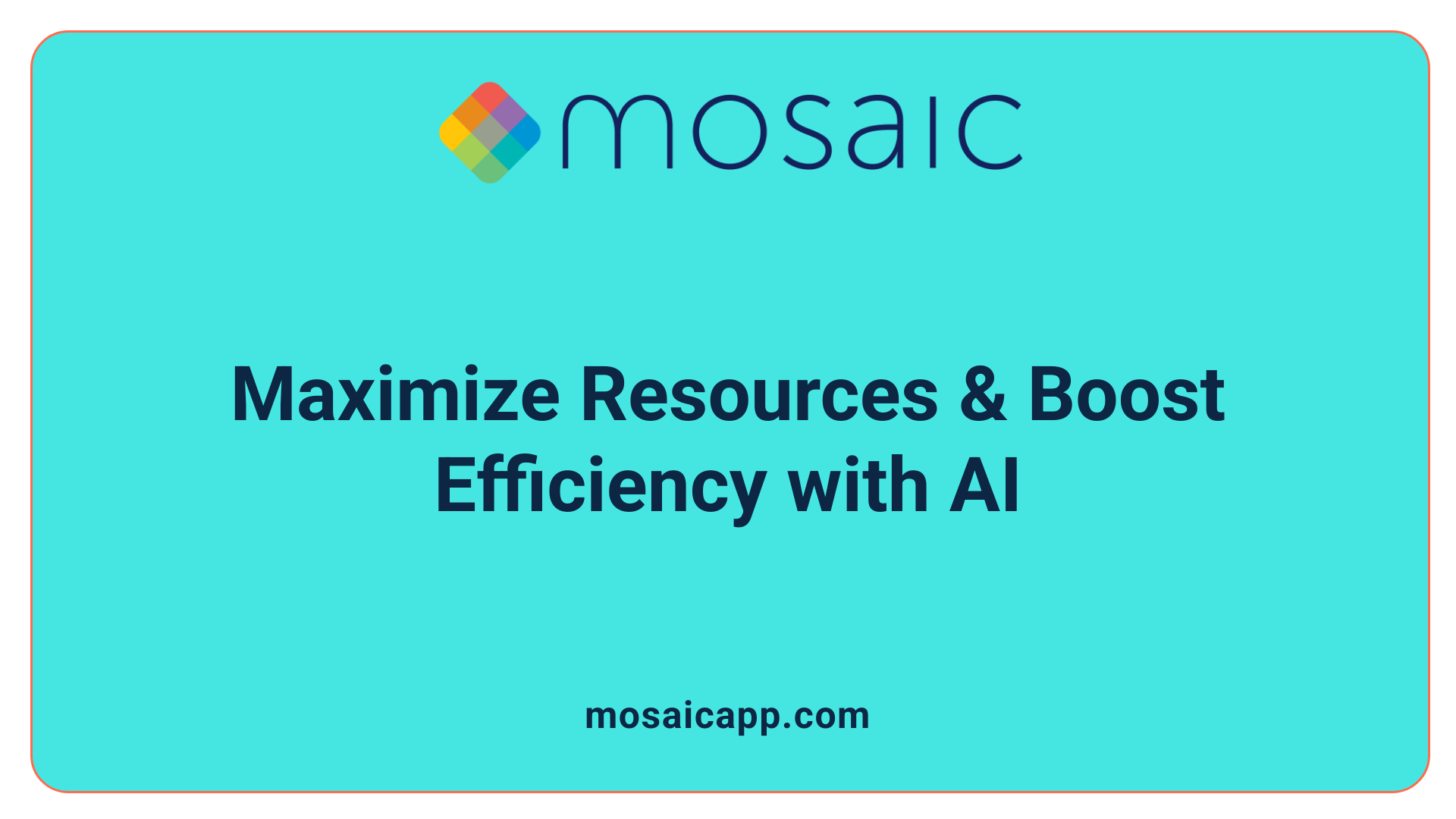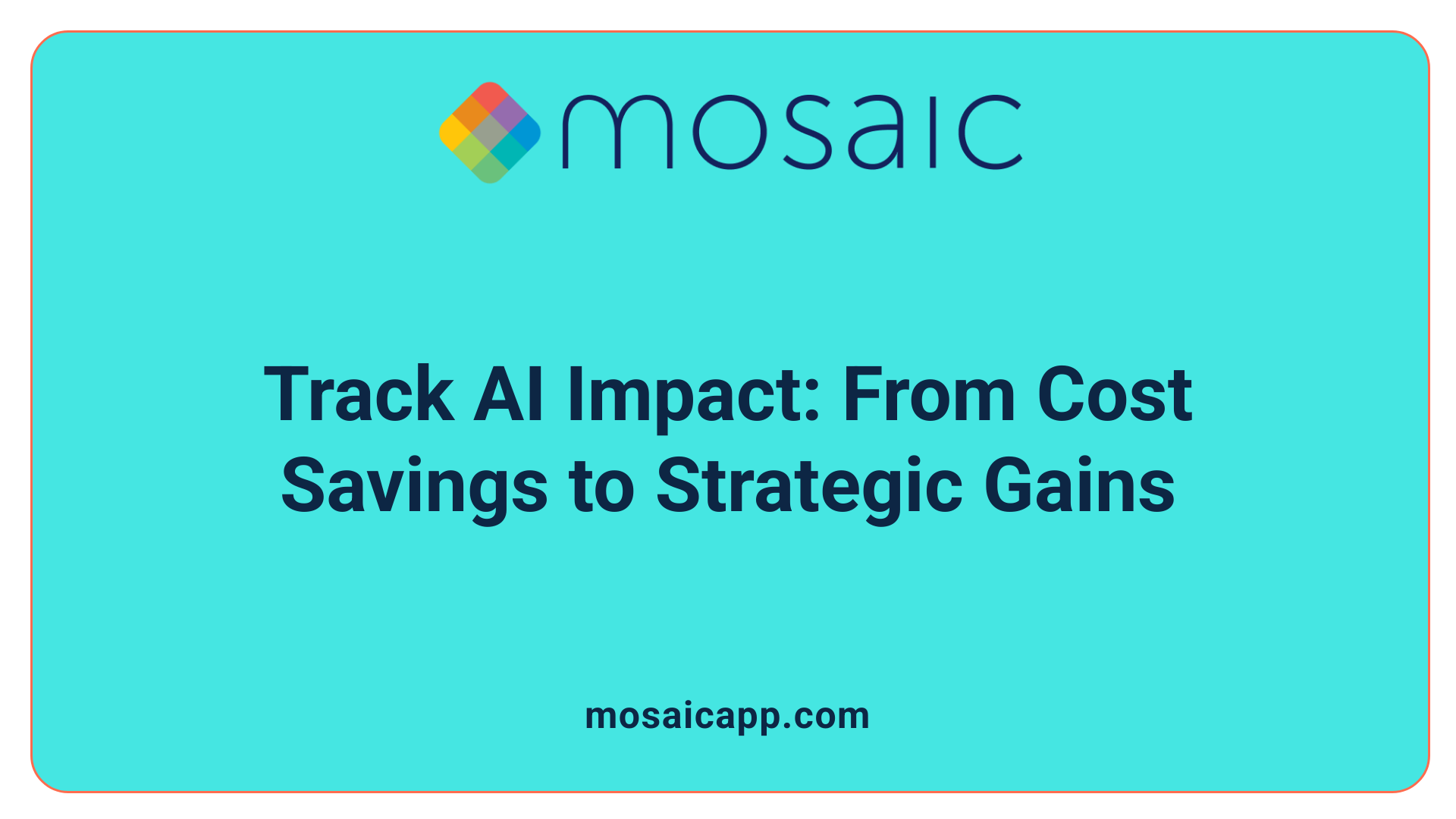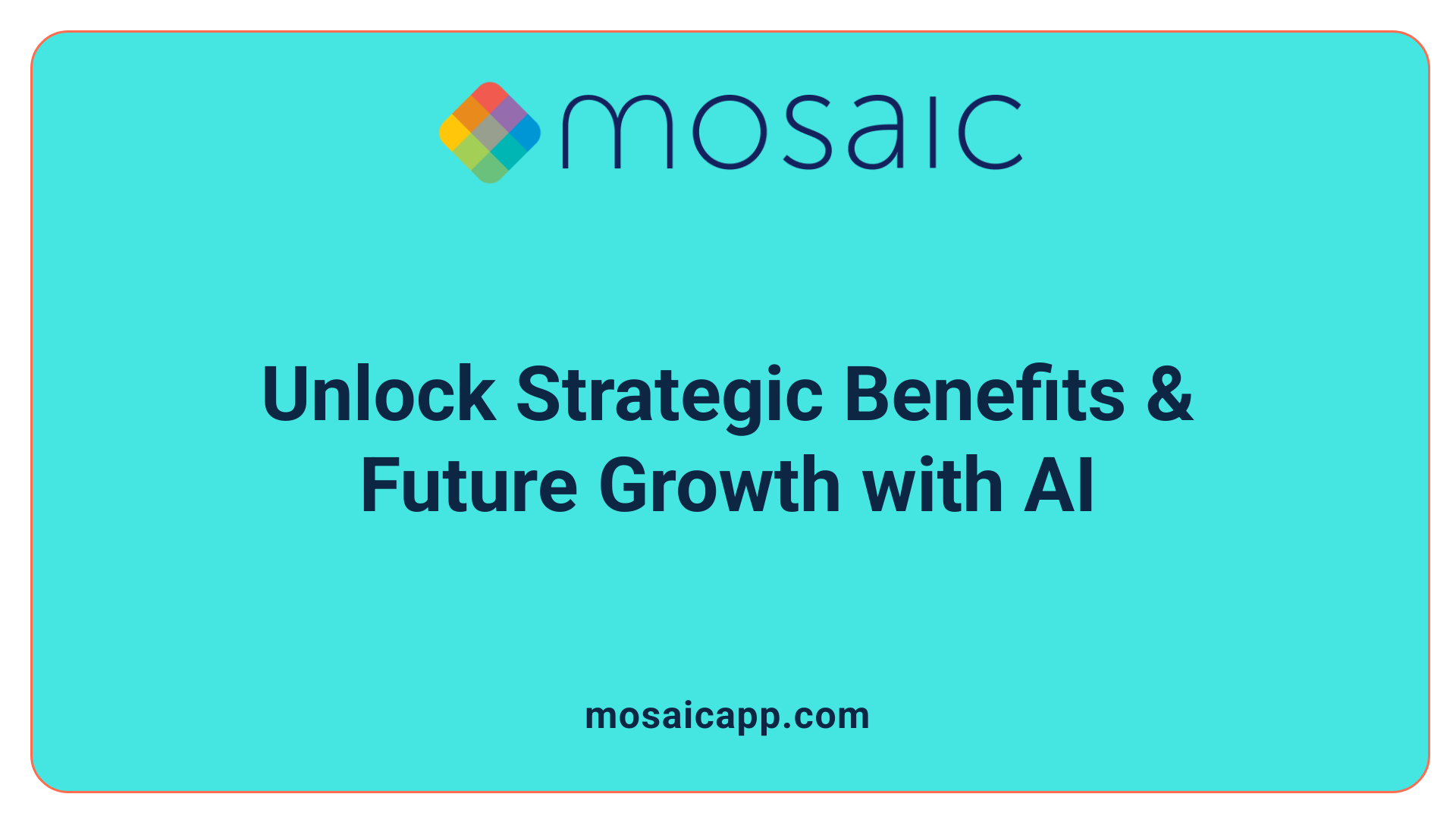Unlocking the Strategic and Financial Benefits of AI in Resource Management
In today’s competitive landscape, organizations are increasingly turning to artificial intelligence (AI) to transform resource management. AI-powered platforms offer a blend of operational efficiencies, cost savings, and strategic advantages that can significantly enhance ROI. This article explores how businesses can evaluate, implement, and benefit from AI-driven resource management solutions, supported by real-world data, best practices, and future outlooks.
Operational Efficiency and Cost Optimization through AI

How can AI platforms optimize resource allocation and improve operational efficiency?
AI platforms dramatically enhance the way organizations manage resources and streamline operations. By harnessing sophisticated algorithms and machine learning capabilities, these platforms analyze extensive data sets — from project schedules to workforce availability — to generate precise demand forecasts.
One of the most significant benefits of AI in operations is automation. AI-powered scheduling tools adjust task assignments dynamically based on real-time project developments, helping to prevent delays and resource wastage. These platforms also continuously monitor operational metrics, enabling immediate response to any emerging issues.
Predictive analytics are at the core of AI-driven resource management. They allow businesses to forecast future needs accurately, optimize utilization rates, and minimize bottlenecks across different departments. For example, AI can predict spike periods in demand and adjust staffing accordingly, ensuring efficient use of personnel and equipment.
Additionally, AI tools facilitate better collaboration and decision-making by providing transparent, data-driven insights. Teams can respond proactively instead of reactively, which improves overall productivity.
Ensuring the successful deployment of AI solutions requires following best practices. These include defining clear objectives aligned with business goals, maintaining high data quality, and establishing strong governance frameworks. Such strategies help organizations realize full benefits, including operational cost reductions and efficiency improvements.
In summary, AI platforms optimize resource allocation by delivering real-time adjustments, advanced forecasting, and error reduction. These improvements lead to significant cost savings and productivity gains across various operational areas.
Measuring and Demonstrating ROI of AI Platforms

How do organizations measure the ROI of AI-powered resource management platforms?
Organizations evaluate the success of AI-driven resource management platforms through a mix of quantitative and qualitative measures. This dual approach provides a comprehensive view of both immediate performance enhancements and long-term strategic gains.
Quantitative metrics often include cost savings, increased revenue, improved productivity, and reduced project delays. For example, automated scheduling and real-time resource adjustments can reduce manual labor costs by up to $700,000 annually and save 15% in contractor expenses. Similarly, better resource matching and offshore shifting can generate annual savings exceeding $1.7 million.
Qualitative measures focus on softer benefits such as improved decision-making, increased employee engagement, and better client satisfaction. These aspects are vital for understanding the full impact of AI on organizational culture and customer relationships.
To accurately gauge ROI, companies employ structured frameworks like Net Present Value (NPV) and Technology Evaluation and Investment (TEI). These models help quantify expected returns against initial and ongoing investments, considering factors like data cleansing, hardware, cloud infrastructure, and talent costs.
Key performance indicators (KPIs) are established at various stages—initially tracking resource utilization rates and project completion times, then moving to quality of hires, turnover rates, and client retention.
Continuous monitoring is crucial. Organizations set baseline metrics before AI implementation and regularly compare current performance against these benchmarks. Ongoing reviews facilitate timely adjustments, ensuring AI investments deliver sustained value.
By integrating these measurement techniques, companies can not only justify their investments but also optimize ongoing AI deployment, ensuring it aligns with long-term strategic goals and operational efficiency.
Strategic Value and Long-term Gains from AI Investments

How do organizations evaluate the strategic benefits of AI-powered resource management platforms?
Organizations assess the strategic value of AI-driven resource management by examining how it enhances decision-making and operational agility. These platforms leverage data-driven insights, pattern recognition, and scenario planning to optimize resource allocation and project execution. They support scalable growth and innovation by automating routine processes and enabling real-time performance monitoring.
Furthermore, organizations consider how AI strengthens leadership capabilities through strategic simulations and predictive analytics that inform decision-making. Effective evaluation also involves managing risks such as bias, lack of transparency, and ethical issues. Ensuring AI additions augment human judgment, while being transparent and stakeholder-inclusive, is crucial.
Ultimately, success is measured by AI’s ability to improve strategic analysis, speed up initiatives, and adapt swiftly to changing external conditions, giving organizations a competitive edge.
What are the long-term benefits and cost considerations when investing in AI-powered resource management platforms?
Long-term advantages of AI resource management include increased operational efficiency, improved resource utilization via predictive analytics, and sustained scalability. These tools help automate repetitive tasks, reduce human errors, and provide instant, data-based insights that lead to cost savings and better strategic decisions.
Despite these benefits, significant upfront costs are involved—covering infrastructure, model development, and skilled talent acquisition. Ongoing expenses include data management, system maintenance, model tuning, and cloud storage costs. Managing these costs effectively involves strategic planning of cloud resources, implementing governance protocols, and training staff.
While the initial investment may be high, the potential for efficiency gains, innovation, and ROI makes AI resource management a wise long-term investment. It enables organizations to stay competitive, adapt quickly, and realize tangible operational improvements over time.
Real Business Outcomes and AI Impact
AI initiatives significantly influence business performance by boosting revenue, cutting costs, and streamlining operations. Companies experience faster, smarter decision-making and enhanced efficiency, thanks to automation and data-driven insights. For example, redesigning workflows with generative AI can improve EBIT by optimizing resource use and accelerating processes. These innovations facilitate better marketing, sales, and customer service strategies, fostering growth.
Effective AI governance, often led by CEOs and senior management, ensures strategic alignment and risk control. Leadership oversight increases the likelihood of achieving higher financial returns from AI projects. Additionally, AI's resource management capabilities help organizations forecast demand accurately, optimize utilization, and remain agile, ultimately reducing costs and speeding up project completion.
Assessing AI's contribution to resource management ROI involves setting clear business goals supported by KPIs covering financial, operational, and qualitative indicators. A reliable data infrastructure and skilled talent are essential for accurate measurement. Organizations should adopt iterative testing, continuous monitoring, and regular audits to track benefits like cost savings and productivity gains, along with intangible effects such as employee engagement and decision quality.
By combining structured evaluation methods with strong governance, businesses can realize the full value of AI initiatives. This strategic approach ensures that AI not only delivers immediate efficiencies but also supports sustained competitive advantage and long-term growth.
Harnessing AI for Competitive Edge and Sustainable Growth
The integration of AI-powered resource management platforms is more than a technological upgrade—it's a strategic imperative that unlocks numerous tangible and intangible benefits. From immediate cost savings and operational efficiency gains to long-term competitive advantages, AI enables organizations to optimize resources, improve decision-making, and adapt swiftly to industry trends. By adopting best practices in measurement, governance, and deployment, businesses can ensure they achieve optimal ROI while mitigating potential risks. As investments in AI continue to grow—with companies spending billions annually—the future of resource management is undoubtedly AI-driven, promising persistent value and a sustainable competitive edge.
References
- Are AI-powered Performance Reviews Really Worth It?
- The Complex Costs of AI: Investments, Funding, and ROI ...
- ROI of AI Investments in Human Resource Management
- Boost Efficiency with AI Resource Management Tools ...
- The ROI of AI in Project Management: Is It Worth ...
- The ROI of AI: Why impact > hype - CIO
- The State of AI: Global survey
- Understanding AI in resource management
- 7 Benefits of Artificial Intelligence (AI) for Business
- How AI Improves Resource Allocation in Business


